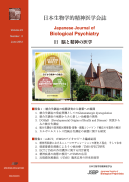Volume 23, Issue 2
Displaying 1-13 of 13 articles from this issue
- |<
- <
- 1
- >
- >|
-
2012 Volume 23 Issue 2 Pages 89
Published: 2012
Released on J-STAGE: February 16, 2017
Download PDF (129K) -
2012 Volume 23 Issue 2 Pages 91-96
Published: 2012
Released on J-STAGE: February 16, 2017
Download PDF (320K) -
2012 Volume 23 Issue 2 Pages 97-101
Published: 2012
Released on J-STAGE: February 16, 2017
Download PDF (199K) -
2012 Volume 23 Issue 2 Pages 103-107
Published: 2012
Released on J-STAGE: February 16, 2017
Download PDF (225K) -
2012 Volume 23 Issue 2 Pages 109-114
Published: 2012
Released on J-STAGE: February 16, 2017
Download PDF (310K) -
2012 Volume 23 Issue 2 Pages 115-120
Published: 2012
Released on J-STAGE: February 16, 2017
Download PDF (335K) -
2012 Volume 23 Issue 2 Pages 121-129
Published: 2012
Released on J-STAGE: February 16, 2017
Download PDF (351K) -
2012 Volume 23 Issue 2 Pages 131-136
Published: 2012
Released on J-STAGE: February 16, 2017
Download PDF (290K) -
2012 Volume 23 Issue 2 Pages 137-142
Published: 2012
Released on J-STAGE: February 16, 2017
Download PDF (247K) -
2012 Volume 23 Issue 2 Pages 143-147
Published: 2012
Released on J-STAGE: February 16, 2017
Download PDF (230K) -
2012 Volume 23 Issue 2 Pages 149-152
Published: 2012
Released on J-STAGE: February 16, 2017
Download PDF (199K) -
2012 Volume 23 Issue 2 Pages 153
Published: 2012
Released on J-STAGE: February 16, 2017
Download PDF (183K) -
2012 Volume 23 Issue 2 Pages 154-155
Published: 2012
Released on J-STAGE: February 16, 2017
Download PDF (220K)
- |<
- <
- 1
- >
- >|
